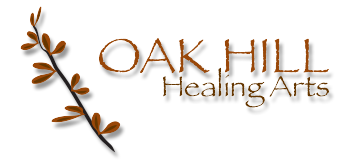
one person at a time

My first blogpost! I’m inspired because one of my favorite herbalists, Kerry Bone, is going to be here on September 26th at the Austin Centre for Wellness. I probably have a crush on him because he’s Australian, but I also have tremendous admiration for him (along with several other long-time herbalists) because of his dedication to bringing a very old science into modern quality standards. He is the founder of MediHerb, one of the herbal lines we carry.
This post is taken directly from one of Kerry Bone’s lectures, and it is for any of you contemplating surgery. We alternative practitioners do everything we can to avoid surgery, but sometimes it’s just the last and best option. This article, “The 5 Herbs You Need to Know About Before Going Under the Knife,” will prepare you for the quickest possible healing. Spoiler alert: I’ll tell you what they are first, for those of you who don’t want to read the entire article. They are milk thistle (silymarin), echinacea, grape seed extract, gingko biloba, and gotu kola. These will 1) minimize the effects of general anesthesia, 2) minimize the risk of post-surgical DVT, and 3) speed up your body’s self-healing powers.
In Kerry Bone’s words:
“The first thing on your pre-surgery to-do list is to make sure any herbs you’re using are safe, and that they don’t interact with anesthetic drugs. Therefore, most herbs should be discontinued about one week prior to surgery – with the exception of milk thistle, which can offset one of the most debilitating aspects of surgery: the side effects of general anesthesia.
“The longer the surgical procedure, the more likely it is that one will experience these effects. But milk thistle (Silybum marianum) reduces the risk my minimizing the impact of anesthesia on the whole body, especially the liver. I recommend starting the herb about three weeks prior to surgery, continue taking it right up to the day before, and then pick up as soon as possible afterwards.
“The dosage amounts depend on the anticipated length of the procedure. For surgery up to two hours, I recommend 600 mg per day, and you should continue taking it for four weeks after surgery. If it’s between two and four hours, I would recommend 800 mg per day, continued for six weeks after. And for any surgery longer than four hours, I would still recommend 800 mg per day, but continued for two to three months post-surgery.
“Keep in mind that milk thistle primarily protects the liver against toxic insult and is very safe. In fact there’s no evidence to suggest that it interacts with drugs by speeding up the rate at which the liver metabolizes them, so it won’t adversely interact with the anesthetics.
“Without the miracle of the body’s own healing, all surgery would be lethal. So enhancing the healing response should be a major priority for any patient who has just undergone any surgery.
“Immune support is one of the key aspects of improving healing. Major surgery also suppresses natural killer (NK) cell activity. These two factors make Echinacea root the ideal herb to use post-surgically, given what we now know about its ability to boost innate immunity and NK cell production and activity. I recommend between 2.5 and 5 g of good quality Echinacea root per day, depending on the severity of the surgery and the risk of infection.
“But equally important is the use of herbs that promote blood flow to connective tissue in areas that have been operated on. Grape seed extract has a number of actions related to healing, including the support of connective tissue by protecting collagen and elastin. And in clinical trials, grape seed extract has been shown to support microcirculation and improve capillary resistance. It also improves venous function, reducing edema (swelling) and improving venous tone, which helps reduce the risk of post-surgical deep-vein thrombosis (DVT). I recommend 100 to 150 mg of grape seed extract per day.
“There is also clinical evidence that suggests Gingko biloba leaf extract helps improve microcirculation. It combines well with grape seed extract, so I typically recommend 100 to 150 mg per day of a 50:1 leaf extract.
“Like grape seed extract, gotu kola (Centella asiatica) also helps strengthen veins and capillaries, so it’s likely that it can help minimize the risk of post-surgical DVT as well. But the area where this underestimated herb really shines is in wound-healing. In fact, it’s been the subject of numerous clinical trials that testify to its ability to boost healing –even when all else has failed.
“The production of new connective tissue is probably the most important aspect of healing, and gotu kola is the only herb that stands out in this area. Clinical trials have established that the active fraction from the herb that improves microcirculation, production of connective tissue, and overall wound healing. In fact, studies have shown that it actually speeds up the healing process, especially in terms of production and strengthening connective tissue.
“These effects have been noted after surgical procedures and traumatic injuries. Clinical trials have also proven that gotu kola helps correct and prevent the formation of scar tissue. The daily dose of gotu kola I suggest following surgery is 7.5 to 15 g per day.
Recap:
Milk thistle (silymarin) – Starting 3 weeks prior to surgery, take right up to the day and as soon as possible thereafter. Surgery up to 2 hours: 3 tablets daily, continue 4 weeks after. Between 2 and 4 hours: 4 tablets daily, continue 6 weeks after. Longer than 4 hours: 4 tablets daily, continue 2-3 months after.
Echinacea – After surgery, 1-2 teaspoons Echinacea Premium 1:2 liquid extract per day, OR 2-4 tablets Echinacea Premium per day.
Gotu kola, grape seed extract, and gingko biloba – After surgery, 4 tablets Gotu Kola Complex per day.
P.S. I followed Kerry Bone’s prescription after my own hip surgery, and brothers and sisters, I can testify!